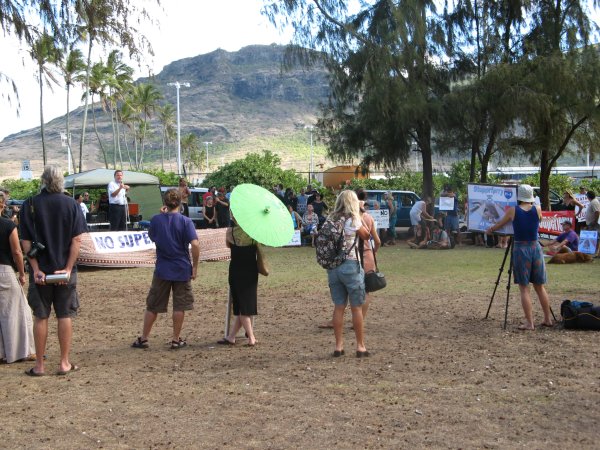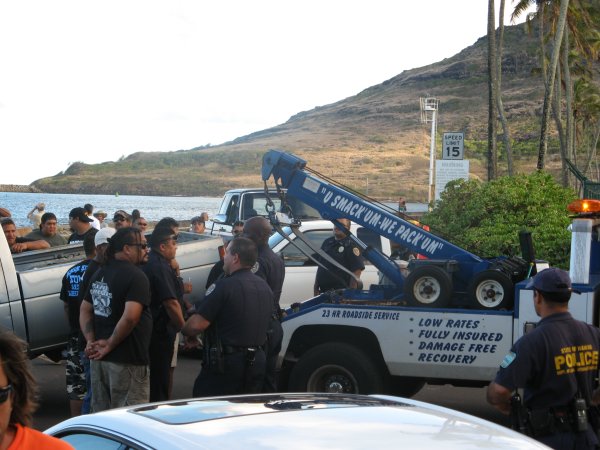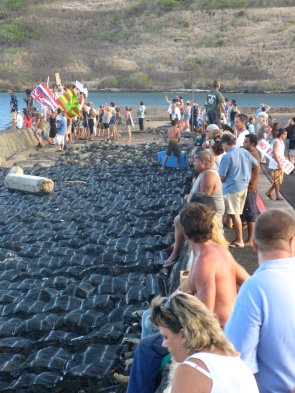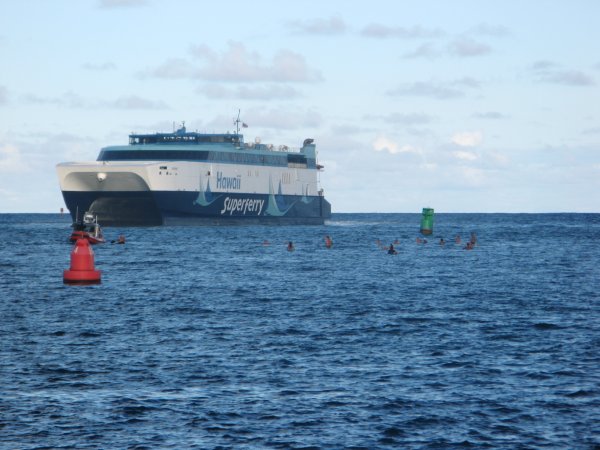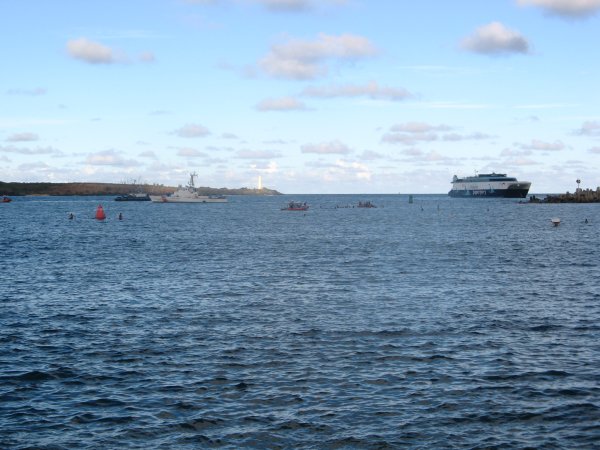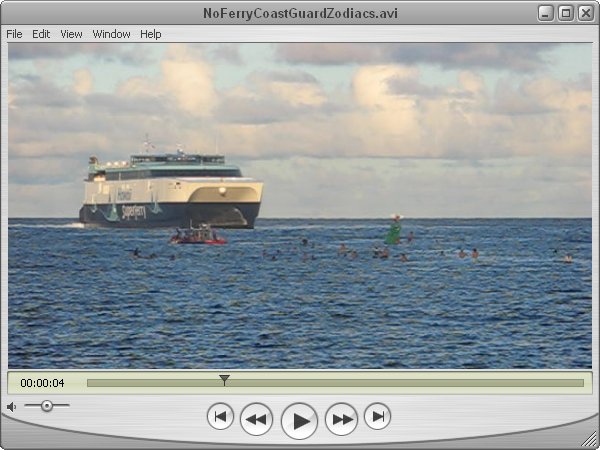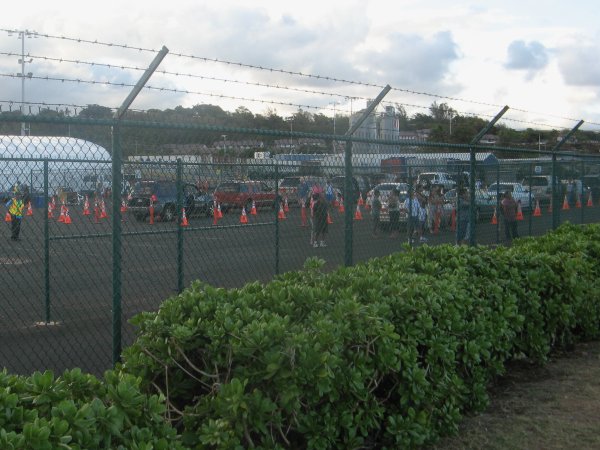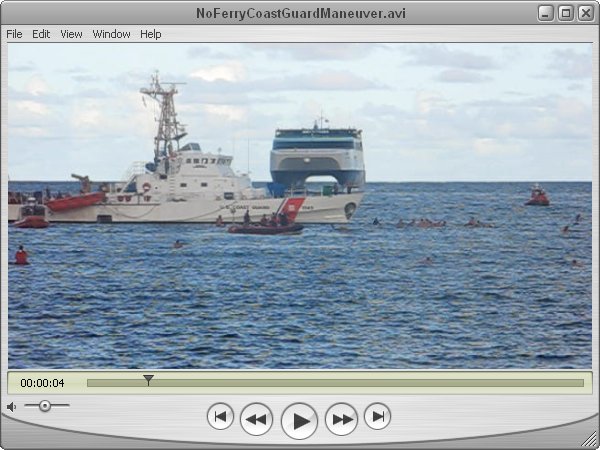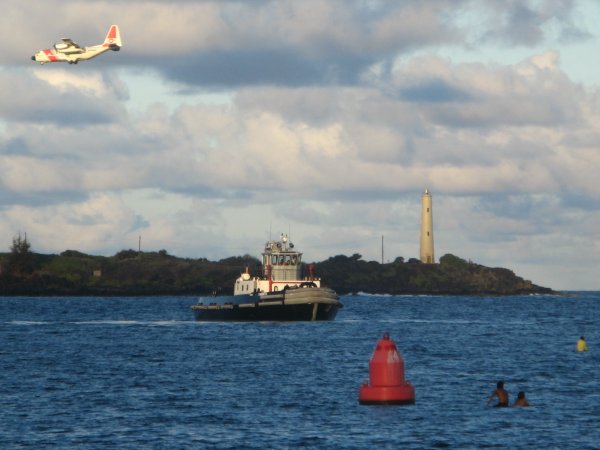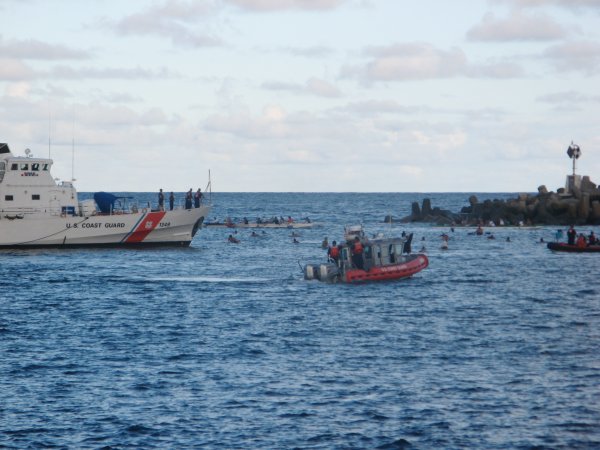I’ve been avoiding a day-by-day, injunction-by-injunction commentary about the superferry, but on Thursday evening, I attended another protest against the ferry and then a “town hall” meeting with state governor Linda Lingle.
I had several reservations about this meeting. First, the meeting announcement in the newspapers revealed that it was really all about the “unified command” (of Coast Guard, port personnel, attourney general, county mayor) coming to explain how the security zone would be enforced in the harbor and what charges arrested people would face—a scare tactic of sorts. This was very discouraging to Kauaians who thought the governor would actually listen to people’s concerns.
Secondly, I read in the newspaper shortly before the meeting that it was going to be filmed for a live webcast. I have never heard of county or state meetings being rebroadcast live on the web, usually they are available on public access channels several days later. My feeling from this was that the governor wanted to let Kauaians know that others were watching them, as a way to keep people in line or shame them.
The day before the meeting, word was getting around that there would be a gathering of ferry opponents at the Kauai County Building in Lihue, just up the street from the convention hall where the governor would be speaking. Given such short notice, we weren’t sure what to expect, but several hundred people showed up. It was mostly a way for the informal leaders of the ferry opposition groups to encourage protestors to be strong yet respectful at the governor’s meeting.

It started with several blessings and prayers in Hawaiian, led by Hawaiian kupuna (elders), as seen in the photo above. JoAnn Yukimura, a former mayor and current council-member, has emerged as the spokesperson for the movement, and she seemed to be coordinating the event. The speakers were obviously chosen to represent the broad spectrum of ferry opponents, including 1000 Friends of Kauai led by a malihini (recent transplant from the mainland), local high-school students, and native Hawaiians. There were t-shirts for sale—literally hot off the presses—with a nice new purple and green map of Kauai saying “EIS First.”
So with our new t-shirts, we all marched down to the convention hall and milled around waiting for the meeting to start. Sitting outside, I noticed these body-boards which I think were the ones being held up by surfers in Nawiliwili harbor on August 27th, the day the ferry itself was being held up. I wonder if they will someday be historic artefacts:
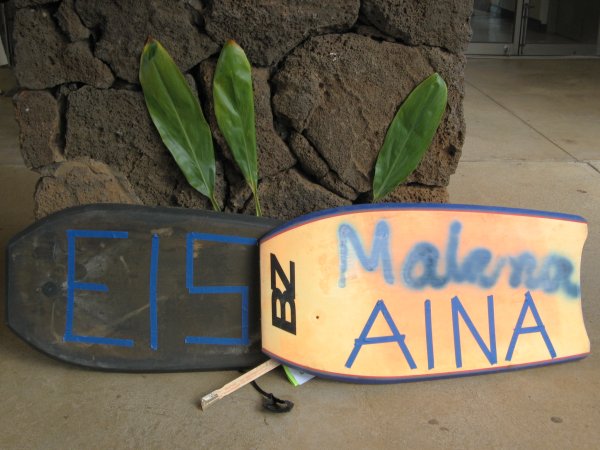
Security guards were allowing people to take signs, but not sticks, into the convention hall, so many signs had to be dismantled, and I had to put mine back in my car. By the time I got back, the hall was full and security wasn’t allowing anyone to enter—again a sensible security issue, though frustrating. Eventually, empty seats were filled and the rest of the crowd was allowed in, filling the standing room at the back.
None of my photos inside were very good, it was mostly dark with some bright lights, so my pictures were either dark, over-exposed, blurry, or all of the above. This one the shows how big the crowd was—and the empty seats were those of people standing in line at the microphones to give public testimony:

Governor Lingle introduced the panel of speakers, and had them begin their speeches. This is the first time I’ve seen the governor in person, and this is the best picture I took of her (my enlargement in the upper-left corner).

There was much booing and interruption, and perhaps this encouraged the panelists to shorten what they had to say. That was no loss because I had read the same information in the newspapers already. Whenever a panelist mentioned the future return of the ferry to Kauai, there was a long and loud booing. Much to her credit, the governor then opened the floor to the public speakers, and really seemed to listen to what people had to say. Led by another speech by Yukimura (now on YouTube, along with rest of the meeting), most of the speakers were voicing their opinion of the ferry and potential harm it might do.
When there was a question, Lingle provided an answer or asked a panelist to answer. The answers were inevitably dissapointing, just reformulating information that had already been available in newspapers or repeating their talking points about how the ferry will arrive and the security zone will be enforced. It was clear that no dialogue was possible, simply because the officials could not be seen as changing their opinion based on any logical or emotional plea from the public. Despite continuing cheers and jeers from the crowd, Lingle was calm and professional, courteous even, showing she is a master politician (and I actually don’t mean that in a bad way).
Protestors had been asked to bring ti leaves and I first thought it was because the ti plant was considered somewhat sacred by the Hawaiians. While wondering if native Hawaiians really waved around ti leaves in protest, I realized it was meant to be a pun on the Boston Tea Party, a key spark of the US Revolution.
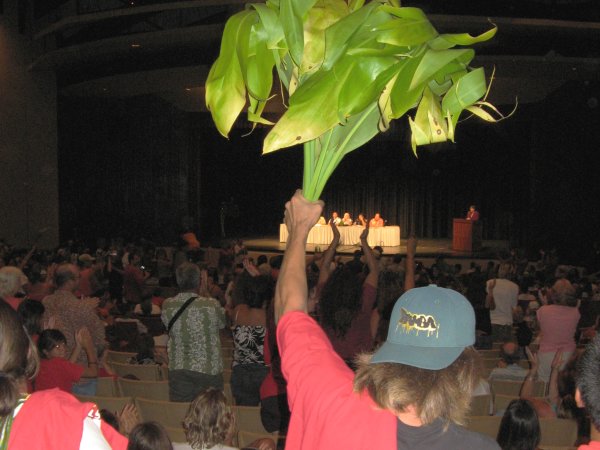
One of the biggest and heartfelt cheers I saw was when one speaker berated the governor for turning not only the Coast Guard but also the state’s child protective services against the people of Kauai (she has threatened to have them investigate parents whose children were or may be involved with a harbor blockade). I think the response was so heartfelt because, like me, it was a new way of looking at how sad the situation really is. During the long cheering, I held my daughter up on my shoulders, and then I actually started tossing her up in the air a few inches and catching her above my head—like most kids, she loves this and it always makes her laugh. After catching her, I would look at the governor, and while I can’t say she saw us, she was looking exactly in our direction and we were clearly visible.
About minors participating in civil disobedience actions, I think I would neither encourage nor discourage my child from participating. Several high school students stepped up to the microphone to give their testimony, and you could tell that their passion came from within, not from adults. I remember being somewhat of an activist in high school: I helped the environmental club set up recycling containers, and I wrote letters for Amnesty International. So I admire students who get involved, it shows their maturity even if they are taking risks—but then so are all those who jump in the water.
Another high point was when a speaker complained about the impact of the security zone on other harbor users (paddlers, fishermen, sailboat races). The exclusion zone is to be enforced an hour before ferry arrival until 10 minutes after departure, 6 days a week. Legitimate users can ask for a variance, and this speaker was asking how to obtain one because after several calls to the Coast Guard, no one could tell her. The rear-admiral fumbled in her papers and finally read off a number. Several people yelled hana hou (again, encore), and somebody must’ve tried to call with a cell phone because they said it was not in service. The rear-admiral then mumbled something about still being in the process of getting set-up before being drowned out by the booing. It’s clear that this speaker probably wasn’t asking for a legitimate variance, but it shows how the whole idea of a security zone is a weak fabrication, not a workable plan.
Here a short video I took during another round of cheering:
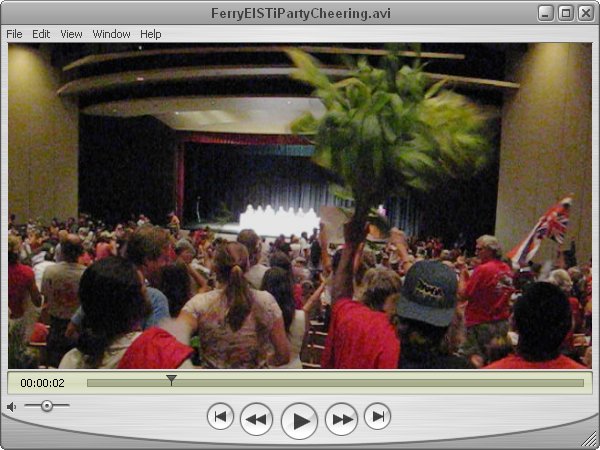
Finally, the Planet Kauai blog has some more coverage of this meeting, with a more impartial but fair assessement of the heated atmosphere, as well as some good insights.






